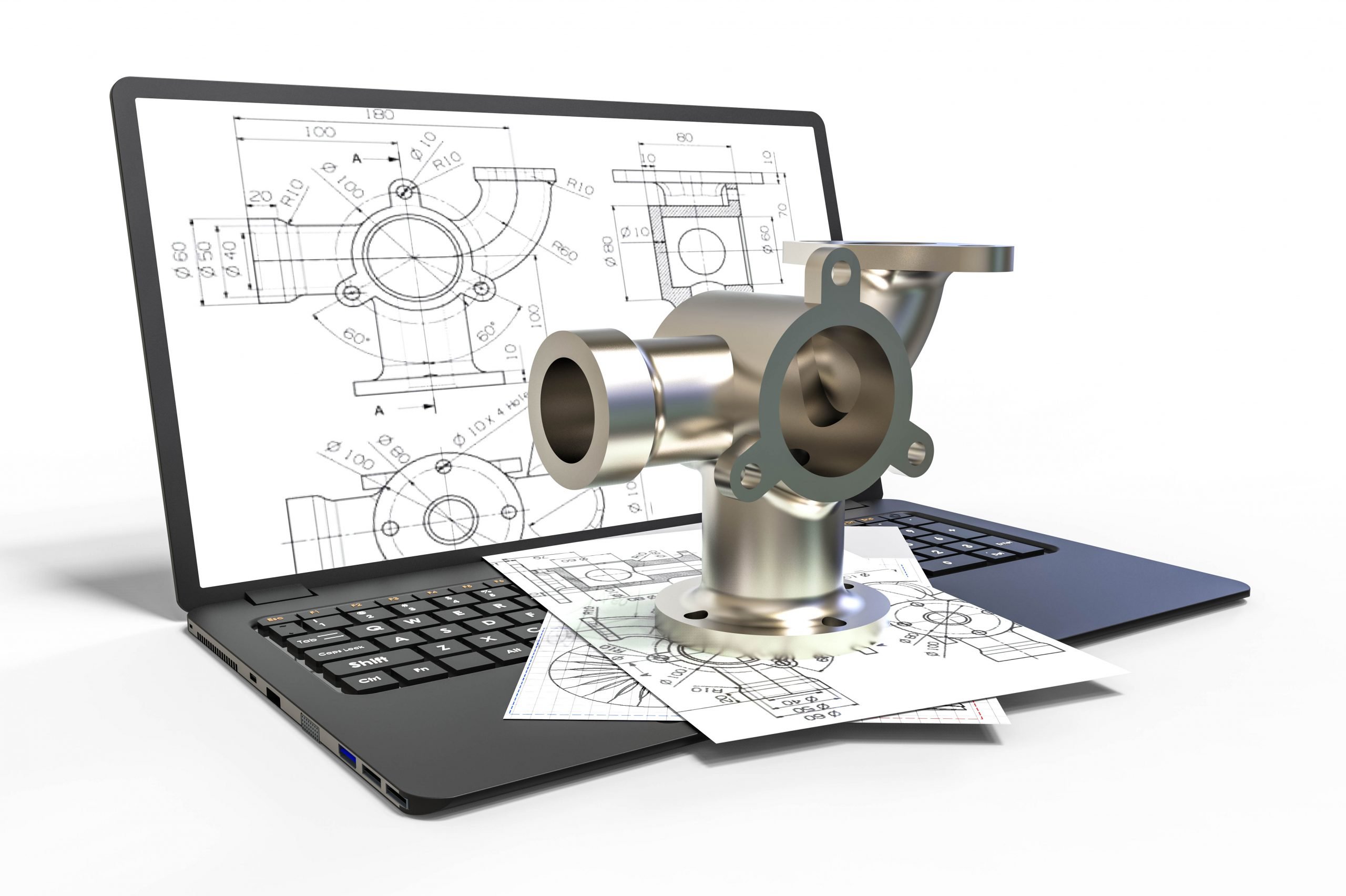
Casting
Trainers feedback
4
(42 reviews)
Team EveryEng
Mechanical Engineering
Course type
Watch to learn anytime
Course duration
492 Min
Course start date & time
Access anytime
Language
English
This course format through pre-recorded video. You can buy and watch it to learn at any time.
Why enroll
Unlock the secrets of casting and transform your manufacturing skills! Our comprehensive casting course covers the fundamentals of sand casting, investment casting, die casting, and more. Learn from industry experts and master the techniques to produce high-quality castings with precision and accuracy. Ideal for foundry professionals, engineers, and manufacturers, this course will enhance your knowledge, improve productivity, and boost your career prospects.
Opportunities that awaits you!

Earn a course completion certificate
Add this credential to your LinkedIn profile, resume, or CV. Share it on social media and in your performance review
Course content
The course is readily available, allowing learners to start and complete it at their own pace.
Casting
15 Lectures
492 min
Steps of Casting Processes
26 min
Casting: Terminology
40 min
The Pattern Allowances I
34 min
The Pattern Allowances II
31 min
Casting: Sand Moulding l
31 min
Sand Moulding II
38 min
Casting: Core and Core Prints
36 min
Casting: Gating System
39 min
Casting: Yield and Riser Design
31 min
Casting: Riser Design
25 min
Casting: Cleaning of Castings
30 min
Casting Casting Defects and their Preventions
42 min
Metal Working Processes: Hot & Cold Working
32 min
Casting: Shell Mould Casting
29 min
Casting: Investment and Permanent Mould Casting
28 min
Course details
Casting is a manufacturing process that involves pouring molten metal into a mold to create a desired shape or design. This ancient technique has been refined over centuries and is widely used in various industries, including aerospace, automotive, medical, and industrial applications. The casting process begins with creating a pattern or replica of the desired shape, followed by preparing the mold cavity. The molten metal is then poured into the mold, allowed to solidify, and removed once cooled. The resulting product, called a casting, can be made from a range of materials, including ferrous and non-ferrous metals, superalloys, and composites.
The versatility of casting lies in its ability to produce complex geometries and intricate designs, making it an ideal method for creating components such as engine blocks, cylinder heads, gearboxes, and turbine blades. Additionally, casting enables high-volume production through techniques like die casting and continuous casting. However, casting also presents challenges, including material limitations, defects, dimensional accuracy, and surface finish. To overcome these issues, foundries employ various techniques, such as gravity casting, pressure casting, vacuum casting, and squeeze casting.
The benefits of casting are numerous, including cost-effectiveness, reduced machining and assembly costs, and the ability to produce complex shapes. Casting also allows for material versatility, enabling the use of various metals and alloys. With advancements in technology and simulation software, casting has become increasingly precise, enabling the production of high-quality components with improved mechanical properties. As a result, casting remains a vital manufacturing process, driving innovation and productivity across diverse industries.
Source: (Youtube Channel - NPTEL)
Course suitable for
Manufacturing Mechanical Production
Key topics covered
Why people choose EveryEng
Industry-aligned courses, expert training, hands-on learning, recognized certifications, and job opportunities—all in a flexible and supportive environment.
- Industry Veteran
- Trainer Review

Team EveryEng
Mechanical Engineering
Questions and Answers
A: Casting is a manufacturing process in which a liquid material, usually metal, is poured into a mold that contains a hollow cavity of the desired shape and then allowed to solidify. Once solidified, the casting is removed from the mold to undergo further finishing. Casting is important because it allows for the creation of complex shapes that would be difficult or uneconomical to make by other methods. It is widely used in various industries such as automotive, aerospace, and machinery to produce components with a high degree of precision and repeatability. For more details, you can refer to: https://www.sciencedirect.com/topics/engineering/casting
A: The main types of casting processes include: 1) Sand Casting: Uses sand as the mold material; versatile and widely used. 2) Die Casting: Involves forcing molten metal into a mold cavity under high pressure; suitable for high-volume production. 3) Investment Casting: Also known as lost-wax casting; offers excellent surface finish and precision. 4) Centrifugal Casting: Uses centrifugal force to distribute molten metal in the mold; commonly used for cylindrical parts. 5) Continuous Casting: Used for producing long lengths of metal sections like rods or sheets. Each process has specific applications depending on the material, desired properties, and production volume. Visit https://www.azom.com/article.aspx?ArticleID=5601 for an in-depth overview.
A: Casting processes can have several environmental impacts, including emissions of harmful gases, consumption of energy, generation of waste materials like used sand and slag, and water pollution from cooling and cleaning operations. To mitigate these, the industry is adopting greener approaches such as recycling and reclaiming sand molds, using cleaner energy sources, implementing stricter emission controls, and developing more environmentally friendly binders and coatings for molds. Advances in process efficiency and the use of simulation software also help reduce material waste. Organizations such as the American Foundry Society offer guidelines on sustainable casting practices: https://www.afsinc.org/GreenCasting
A: Common metals used in casting include cast iron, aluminum, steel, copper alloys, magnesium, and zinc. The selection depends on factors such as mechanical properties required, corrosion resistance, melting point, fluidity, cost, and specific application needs. For instance, aluminum is lightweight with good corrosion resistance and is used extensively in automotive parts, while cast iron offers excellent wear resistance and is common in heavy machinery. The choice also depends on casting method compatibility and post-processing requirements. For comparative information, see https://www.metallurgicalcasting.com/metal-selection-guide
A: Simulation software allows engineers to model and analyze the casting process virtually before manufacturing. It helps predict issues such as flow behavior, solidification patterns, stress distribution, and potential defects like porosity and shrinkage. This enables optimization of gating and riser design, mold temperature control, and alloy selection, reducing trial-and-error, saving time, and lowering production costs. Widely used tools include MAGMASOFT, ProCAST, and FLOW-3D Cast. Utilizing simulation enhances casting quality and efficiency significantly. Explore more about casting simulation at https://www.simu-casting.com/
A: Post-casting processes include fettling (removing gates, risers, and excess material), heat treatment to improve mechanical properties, surface finishing (grinding, polishing, shot blasting), machining for dimensional accuracy, and non-destructive testing (X-ray, ultrasonic) to detect internal defects. These steps ensure the casting meets the required specifications and performance criteria. Heat treatment can relieve stresses and enhance hardness or ductility, while machining is critical for precision components. For an overview, visit https://www.castinginspection.org/post-casting-operations/
A: Quality control in casting involves monitoring raw materials, melting and pouring parameters, mold quality, and process conditions consistently. Inspections include visual checks, dimensional measurements, and non-destructive testing like radiography and ultrasonic testing to detect internal flaws. Statistical process control helps maintain process consistency. Implementing standards such as ASTM or ISO ensures uniformity. Documentation, operator training, and traceability are also important parts of quality management. More guidelines can be found at https://www.qualitymag.com/articles/93081-casting-quality-control-techniques
More from Same Author
- Technical Courses
- Articles
4 (41)
Instructor led live training
1579
Online
Live courses
4 (41)
Watch to learn anytime
644
1
E-Learning
Unlimited access
4 (41)
Watch to learn anytime
1453
10
E-Learning
Unlimited access
Earning and Growth option in same Industry Domain
- Pre-recorded
- Online live session
- Offline
- Articles
Watch to learn anytime
720
E-Learning
Unlimited access
Watch to learn anytime
899
E-Learning
Unlimited access
Watch to learn anytime
727
E-Learning
Unlimited access
More Training & Development option to expand your reach
- Technical courses
- Soft-skill courses
- Seminars & Conferences
- Articles & Blogs
Instructor led live training
504
Online
Live courses
October 13
15 Hrs
Advanced
Instructor led live training
322
Online
Live courses
October 13
15 Hrs
Advanced
Instructor led live training
123
Online
Live courses
November 16
30 Hrs
Advanced
























